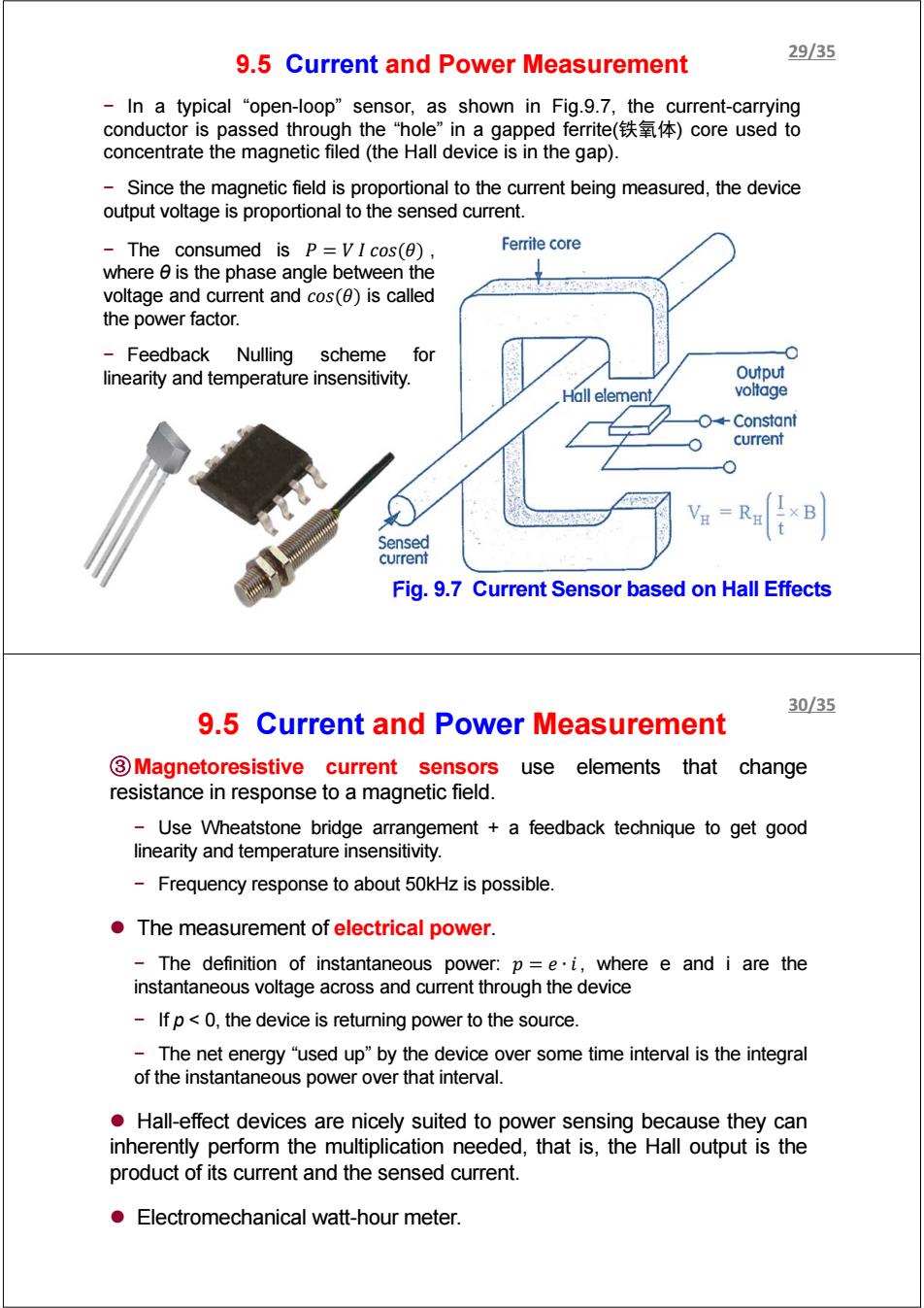正在加载图片...

9.5 Current and Power Measurement 29/35 In a typical "open-loop"sensor,as shown in Fig.9.7,the current-carrying conductor is passed through the "hole"in a gapped ferrite()core used to concentrate the magnetic filed (the Hall device is in the gap). -Since the magnetic field is proportional to the current being measured,the device output voltage is proportional to the sensed current. The consumed is P=VI cos(0), Ferrite core where e is the phase angle between the voltage and current and cos()is called the power factor. Feedback Nulling scheme for linearity and temperature insensitivity. Output Hall element voltage 一O◆Constant current VH= ×B t Sensed current Fig.9.7 Current Sensor based on Hall Effects 30/35 9.5 Current and Power Measurement 3Magnetoresistive current sensors use elements that change resistance in response to a magnetic field. Use Wheatstone bridge arrangement a feedback technique to get good linearity and temperature insensitivity. Frequency response to about 50kHz is possible. The measurement of electrical power. -The definition of instantaneous power:p =e.i,where e and i are the instantaneous voltage across and current through the device If p 0,the device is returning power to the source. -The net energy"used up"by the device over some time interval is the integral of the instantaneous power over that interval. Hall-effect devices are nicely suited to power sensing because they can inherently perform the multiplication needed,that is,the Hall output is the product of its current and the sensed current. Electromechanical watt-hour meter.9.5 Current and Power Measurement Fig. 9.7 Current Sensor based on Hall Effects − In a typical “open-loop” sensor, as shown in Fig.9.7, the current-carrying conductor is passed through the “hole” in a gapped ferrite(铁氧体) core used to concentrate the magnetic filed (the Hall device is in the gap). − Since the magnetic field is proportional to the current being measured, the device output voltage is proportional to the sensed current. − The consumed is ܲ = ܸ ܫܿ ݏሺߠሻ , where θ is the phase angle between the voltage and current and ܿݏሺߠሻ is called the power factor. − Feedback Nulling scheme for linearity and temperature insensitivity. 29/35 ③Magnetoresistive current sensors use elements that change resistance in response to a magnetic field. − Use Wheatstone bridge arrangement + a feedback technique to get good linearity and temperature insensitivity. − Frequency response to about 50kHz is possible. z The measurement of electrical power. − The definition of instantaneous power: ,݅∙݁=where e and i are the instantaneous voltage across and current through the device − If p < 0, the device is returning power to the source. − The net energy “used up” by the device over some time interval is the integral of the instantaneous power over that interval. z Hall-effect devices are nicely suited to power sensing because they can inherently perform the multiplication needed, that is, the Hall output is the product of its current and the sensed current. z Electromechanical watt-hour meter. 9.5 Current and Power Measurement 30/35